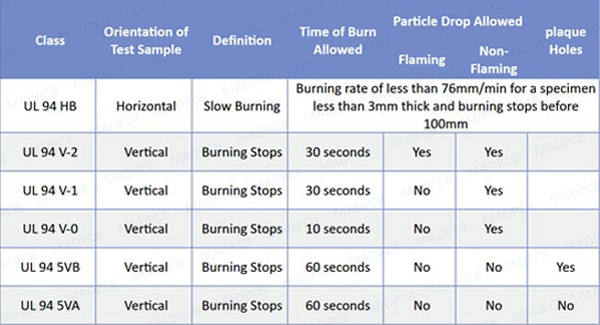UL 94, the Standard for Safety of Flammability of Plastic Materials for Parts in Devices and Appliances testing, is a plastics flammability standard released by Underwriters Laboratories (UL) of the United States. The standard determines the material’s tendency to either extinguish or spread the flame once the specimen has been ignited. UL-94 is now harmonized with IEC 60707, 60695-11-10 and 60695-11-20 and ISO 9772 and 9773.
Classifications
From lowest (Least flame-retardant) to highest (Most flame-retardant):
- HB: slow burning on a horizontal specimen; burning rate < 76 mm/min for thickness < 3 mm or burning stops before 100 mm
- V-2: burning stops within 30 seconds on a vertical specimen; drips of flaming particles are allowed.
- V-1: burning stops within 30 seconds on a vertical specimen; drips of particles allowed as long as they are not inflamed.
- V-0: burning stops within 10 seconds on a vertical specimen; drips of particles allowed as long as they are not inflamed.
- 5VB: burning stops within 60 seconds on a vertical specimen; no drips allowed; plaque specimens may develop a hole.
- 5VA: burning stops within 60 seconds on a vertical specimen; no drips allowed; plaque specimens may not develop a hole.
In PCB base materials, the 94V-0 PCB and flexible circuits are defined as printed boards inscribed on PCBs (Printed Circuit Boards) that have met the UL 94V-0 flammability test.

